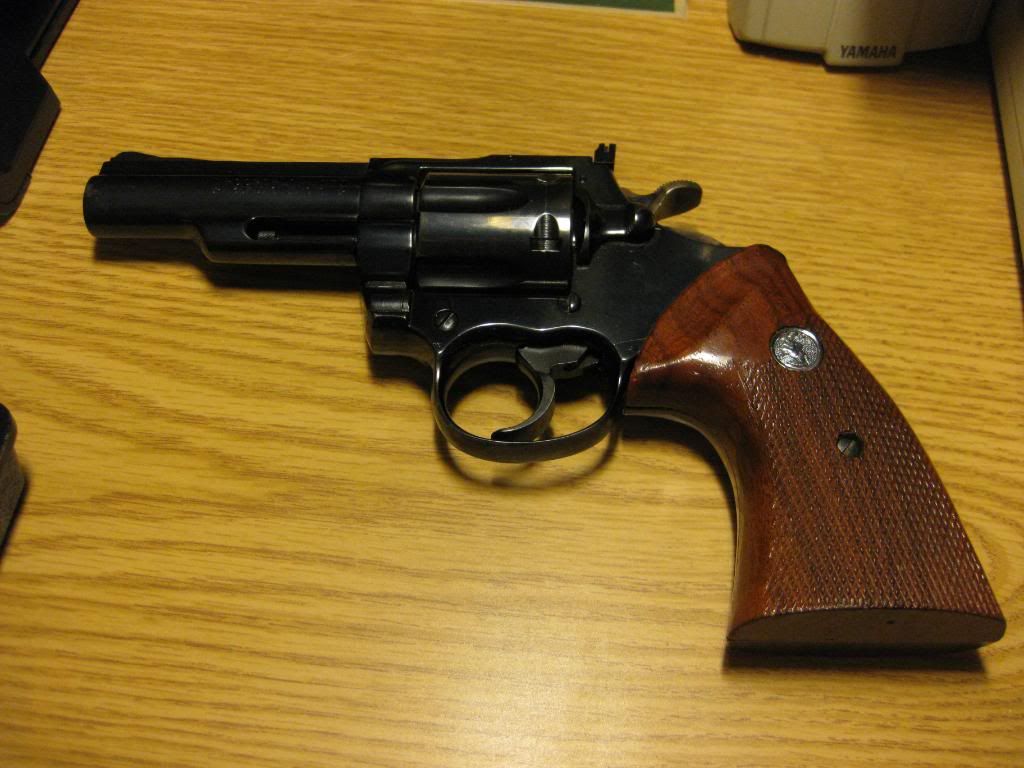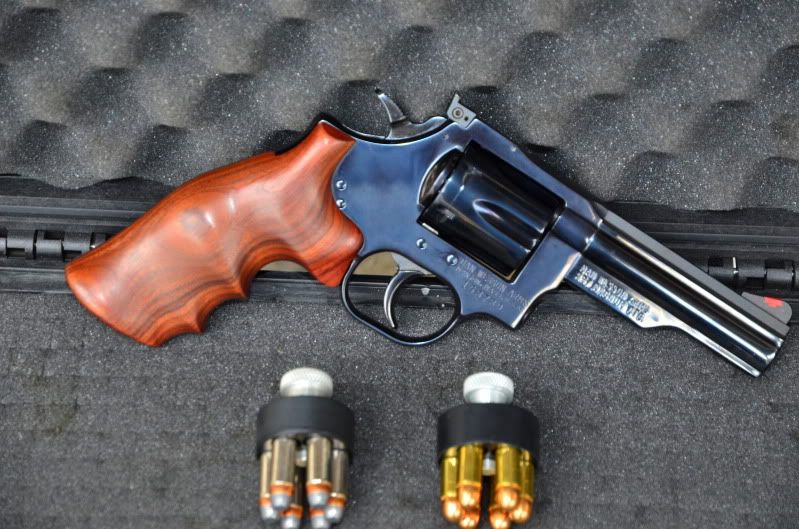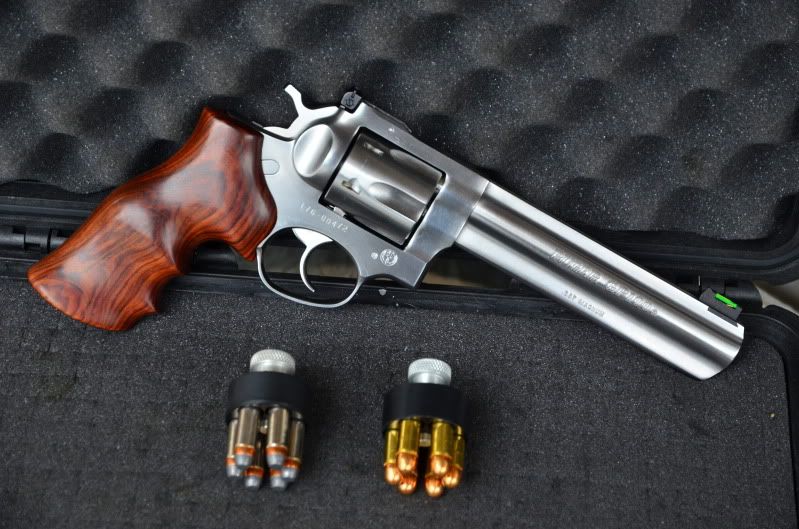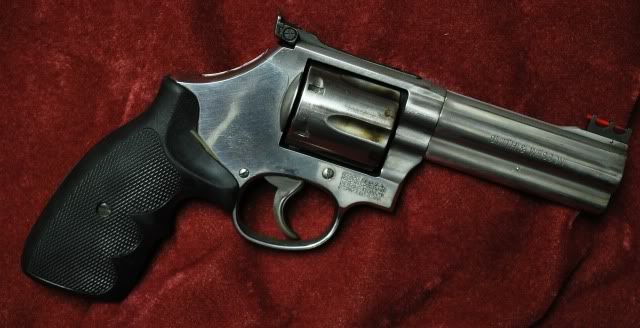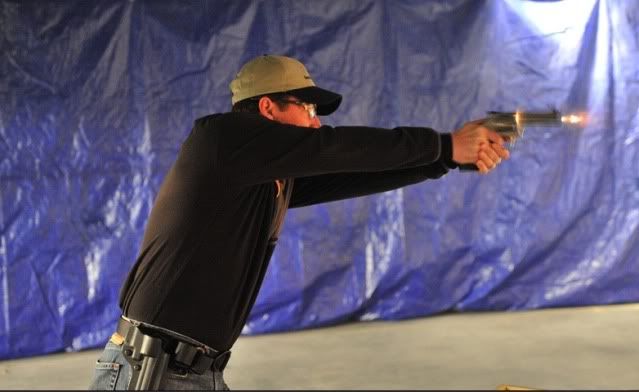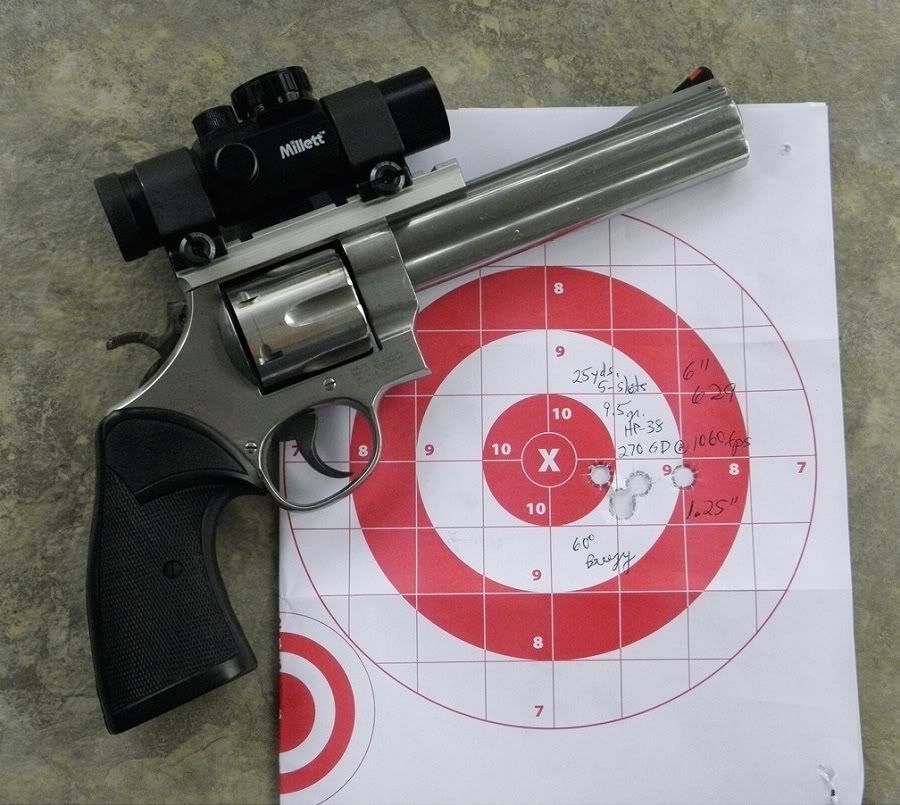Regarding just revolvers, I've owned all kinds. Single actions and double actions. Colts, Charter Arms, Taurus', antique Italian Bodeo's, J.P. Sauer and sohns, Hi standards, Dan Wessons and model 29 Smith and Wessons. Some that I've shot a lot but never owned myself were model 28 S&W's and model 15 S&W's when I was in law enforcement. I currently own a S&W .38 special two inch barrel nickel "airweight", two Uberti single action, caliber .45 Colt hombres and several nickel with stainless cylinders Pietta 1860 BP revolvers. I like all of them.
Of course to answer your question, it depends on what I'm going to use the revolver for and if I want to conceal it or not. For lightweight carry and concealment the S&W .38 special snubby airweight wins. But if concealment is not an issue, then out of all the revolvers I own and have ever owned, I like my three S&W model 1917's the best. One is a commercial model in blue with 5 & 1/2 inch barrel, one is matte nickel also with 5 & 1/2 inch barrel and one is one I restored that is highly polished "in the white" with a cut snubby barrel .
Here's why I like them best.
1. Being .45 acp they throw a big 230 grain slug at an average of 830 fps with a lot of knockdown power (without having over-penetration) that is perfect for one shot knockdown against unarmored humans as well as most animals, unless you are shooting a big Buffalo, Grizzly bear, Elephant or Rhino. I haven't yet had occasion to, nor expect to have to shoot any of those.
2. Although they have a slightly longer hammer cycle than modern revolvers, as well as a fairly stiff factory hammer spring and trigger return spring (designed in a day when military primers were harder & thus they wanted assured ignition), with a Wolf kit lightened hammer spring as well as a Wolf lightened trigger return spring, their actions are slick as oil on a doorknob.
3. One huge advantage that they have over other revolvers is the extremely quick ability to eject and reload all six rounds in just a second using full moon clips. No fumbling around with single cartridges or bulky/finicky speed-loaders. That is a reloading advantage that cannot be over-stated. They can be ejected and reloaded about as fast as a magazine fed pistol. For 1917 that was many decades ahead of its time and still ahead of its time for most revolvers today that require single cartridge loading.
4. Being an "N" frame, they are big and the shape of their grip fits my big hands better than a smaller frame revolver. No problem keeping my pinky finger on the grip on a 1917.
5. They have an extremely robust action, are built like a tank, and have lasted from WW1 until now and still perform like they are supposed to.
6. I can shoot them single or double action. Single action for best accuracy and double action for speed and fast followup shots. Not being a magnum, muzzle blast and recoil is mild and followup shots are quicker than with a magnum. Although they don't have the penetration of a magnum (I think that's a good thing if a bystander happens to run behind your target in a gunfight or if you miss and your bullet goes into a wall or something rather then penetrating and hitting someone else) with their big slug they have comprobile knock down power.
7. They are a piece of history that still perform as well today as they did almost a century ago. Actually with the Wolf lightened spring kit, they perform even better than they did originally from the factory, and they were pretty good even from the factory, even by today's standards.
8. In my opinion, their fit and finish are superior to most revolvers built today. All three of mine have amazingly tight lockup on their cylinders with practically no movement and the matte nickel and in the white snubby were built in 1918 and the commercial model built somewhere between 1929 and 1938, and in my opinion they still beat any modern revolver as far as lockup, fit and finish. Even though I restored my snubby barrel 1917 from being rusty with a bent extractor rod, its cylinder still locks up tighter than any modern revolver and did so even before the restoration. In my opinion, manufacturers today simply do not spend the time nor cost to build nor fit revolvers today that are that precise on lockup, as they did in the days when the old school master craftsmen built the 1917 S&W's.
9. Having smooth fixed sights there is no sharp edges on a rear sight to snag on clothing, have to adjust or get out of whack. You just learn where that particular revolver hits and compensate. It ain't a rifle and isn't expected to have rifle accuracy. It is exactly what it was built to be....a big combat handgun throwing a big slug.
Those are my reasons for my liking them the best of any revolvers I own or have ever owned. I think they are good reasons, based on my experience of shooting a lot of revolvers. Other people's experiences and opinion may vary.
.


